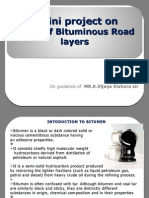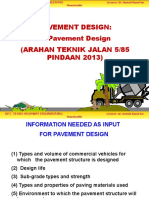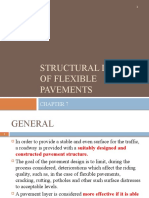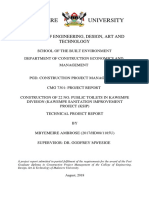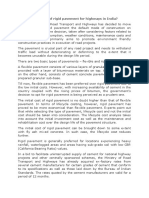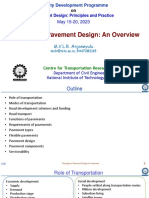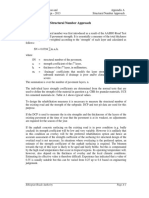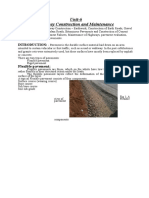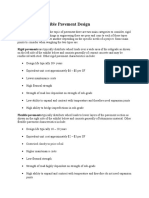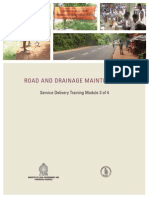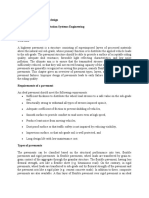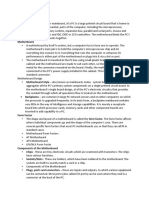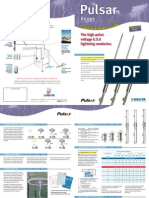0% found this document useful (0 votes)
395 views13 pagesFlexible Pavement Essentials
This document discusses flexible pavements. [1] It begins by outlining the requirements of an ideal pavement. [2] It then provides an overview of flexible pavements, describing their layered structure and how stresses are distributed. Common types of flexible pavements are described. [3] Typical layers of a flexible pavement are listed and their purposes explained. Major types of flexible pavement failures are also summarized.
Uploaded by
Ahmad NajiCopyright
© © All Rights Reserved
We take content rights seriously. If you suspect this is your content, claim it here.
Available Formats
Download as DOCX, PDF, TXT or read online on Scribd
0% found this document useful (0 votes)
395 views13 pagesFlexible Pavement Essentials
This document discusses flexible pavements. [1] It begins by outlining the requirements of an ideal pavement. [2] It then provides an overview of flexible pavements, describing their layered structure and how stresses are distributed. Common types of flexible pavements are described. [3] Typical layers of a flexible pavement are listed and their purposes explained. Major types of flexible pavement failures are also summarized.
Uploaded by
Ahmad NajiCopyright
© © All Rights Reserved
We take content rights seriously. If you suspect this is your content, claim it here.
Available Formats
Download as DOCX, PDF, TXT or read online on Scribd
/ 13


